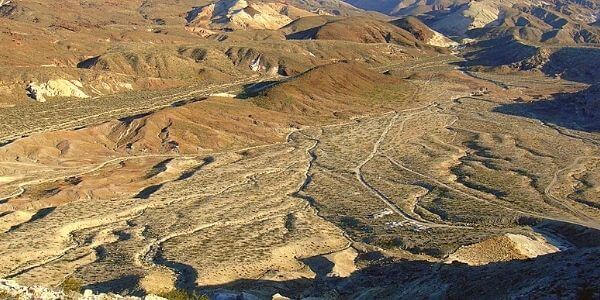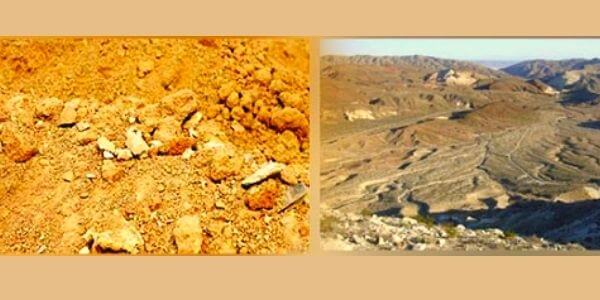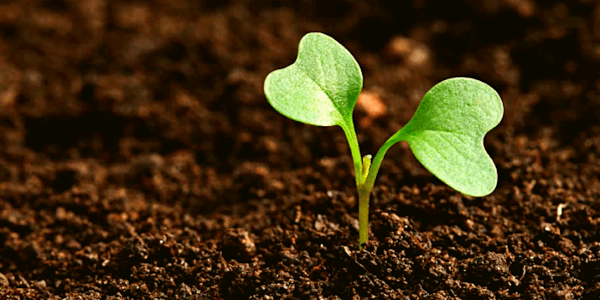The topic ‘Soil’ is significant for the UPSC IAS Exam – Geography, which is covered in Mains GS-I. This article will provide you with a general overview of Alluvial soil. What is alluvial soil in India, its properties, alluvial soil distribution in India, old alluvial soil, and images? So let’s get this started.
Definition of Soil
Soil is the loose material or upper layer of the mantle rock that contains mostly extremely fine particles and humus that can sustain plant growth. Mineral/rock particles, decomposed organic matter, soil water, soil air, and live organisms make up the majority of soil. Parent material, relief, climate, vegetation, living forms, and time are all key influences on soil formation.
Soil is made up of four elements in general:
- Organic Substance
- Inorganic Material
- Air
- Water
Types
Soils were divided into two types in the ancient world: Urvara (fertile) and Usara (unfertile) (sterile).
Vasily Dokuchaev was the first to classify dirt scientifically. India’s soils are categorized into 8 categories by the Indian Council of Agricultural Research (ICAR). They are as follows:
- Alluvial Soil
- Red & Yellow Soil
- Black Cotton Soil
- Laterite Soil
- Mountainous or Forest Soil
- Arid or Desert Soil
- Saline & Alkaline Soil
- Peaty & Marshy Soil
ICAR classifies soils into eight categories, as previously stated. Let’s take a closer look at alluvial soil in this article. We’ll also study about India’s alluvial soil. What is the name of old alluvial soil, what is alluvial soil, and images of alluvial soil? Before we get into it, let’s have a look at another important topic for UPSC preparation: E-Waste. What is it? | Electronic Waste Management and Recycling.

What is Alluvial Soil?
Alluvial soil is generated as a result of river and stream erosion and deposition. The north Indian plains and peninsular India’s drainage basins have the most fertile soils. The debris transported down from the Himalayas is the principal source of alluvial soil deposits in India’s more enormous plains. It is the most common type of soil in India. They are the most extensive soil group, covering about 15 lakh square kilometers (46 percent of the total land area). They supply India’s inhabitants with the most fertile agricultural lands, supporting more than 40% of the country’s population. They are depositional soils transported and deposited by rivers and streams because the Himalayan rock is the parent material. The nature of this soil ranges from sandy loam to clay. Potash is abundant, but phosphorus is scarce. Wheat, maize, sugarcane, pulses, oilseeds, and other crops are primarily grown on alluvial soils.
Characteristics
- They are immature and have poor profiles due to their recent genesis.
- The soil is generally sandy. However, there are some clayey soils.
- They range from loamy to sandy-loam in drier places, with clayey loam towards the delta.
- Pebbly or gravelly soils are hardly prevalent. However, Kankar (calcareous concretions) beds can be found in some regions along the river terraces.
- The soil is porous due to its loamy (equal amounts of sand and clay) makeup.
- Good drainage and other agricultural conditions are made possible by porosity and texture.
- Recurrent floods replace these soils on a regular basis.
Alluvial Soil Distribution in India
- Except in a few areas where the top layer is covered by desert sand, they may be found all over the Indo-Gangetic-Brahmaputra plains.
- They also exist in the Mahanadi, Godavari, Krishna, and Cauvery deltas, where they are known as deltaic alluvium (coastal alluvium)
- The Narmada and Tapi valleys and the northern regions of Gujarat have some alluvial soils.
Geological Division of Alluvial Soil
- Alluvial soil can be found in abundance in India’s Northern Plains and in the country’s eastern coastal plains, such as the Mahanadi delta, Godavari delta, Krishna delta, and Kaveri delta.
- It can be found throughout the Indo-Gangetic plain, particularly along with the lower courses of India’s major rivers, such as their deltas, in the Northern Plains.
- India has the highest percentage of this soil distribution, at over 43%. The Great Northern Plains, such as the Ganga Plains, is an area rich in alluvial soil. This is due to the Himalayan Mountains and the rivers that flow from them.
- By its flowing water, the Ganga carries, transports, and dumps soils and fine sediments and silt, fine sediment, and boulders along its banks.
- They reach the Gujarat plains via a short corridor in Rajasthan.
- These are found along the eastern coast and in the river valley of the peninsular regions.
Remember to look at the image of India’s soil map and have a look at the alluvial soil.

There are two types of alluvial soil.
- Old Alluvial soil is called Bangar.
- Khaddar is a new alluvium. The Indo-Gangetic plain is characterized by two types of alluvium: Khadar, which is uniform in texture and rather fruitful, and Bhangar, which is alkaline.
Bangar
Bangar/Bhangar should not be mistaken with the sandy desert Bagar region, which is similarly not prone to flooding; nonetheless, villages outside of the Bagar region may contain both Khadar and Bangar sections (see Doab for better clarity). Bangar is less prone to flooding, but it is often drier and less fertile. The Bhangar is the older alluvium that forms terraces higher than the floodplain (approximately 30 meters above flood level) along river banks. It has a more clayey texture and is often black in color. Beds of lime nodules known as “Kankar” may be seen a few meters below the bhangar’s terrace. They are most commonly found in doabs. The ‘Bhur formations’ in the middle Ganga & Yamuna doab and the ‘Barind plains’ in the deltaic region of Bengal are examples of regional variances.
Khaddar
Floodplains that are low-lying near to a river are known as Khadir or Khadar plains. Khadar regions are prone to floods and may contain former riverbeds that became suitable for agriculture after a river’s route changed. When wet, it retains moisture and becomes sticky. Khadir soil is made up of fresh alluvial soil deposits that are usually quite fertile. The Bangar plains are higher in elevation and have older alluvial soil. Because a new layer of alluvium is deposited by river floods virtually every year, it is the most fertile section of the Ganger water system. These floodplains are called ‘Betlands’ or ‘Bets’ in Punjab.
Here are some images of alluvial soil.


Conclusion
Details of India’s alluvial soil have been added to the page. i.e., What is the name of old alluvial soil, and what is alluvial soil? And Images. It’s one of the most important concepts for the IAS exam. As a result, read the entire article. We have attempted to cover all aspects of the IAS exam in order to assist you in passing it. As a result, when reading the paper, attempt to note down all important elements. The official UPSC exam website can be found here. Simply visit through it and acquire all of the most recent updates.
FAQ
Alluvial soils are typically flat and consistent, making them ideal for farming. Rice, wheat, sugarcane, cotton, tobacco, pulses, oilseeds, jute, maize, oilseeds, fruits, and vegetables are among the many crops that they produce.
Finer particles (sand and silt) are deposited when the water velocity falls, whereas fine silt and clay particles are deposited by slow-moving water found in deltas. Landforms such as historic streambeds, floodplains, deltas, fans, and levees are all connected with the alluvial parent material.
Wheat, rice, sugarcane, and cotton are all grown on this sort of soil. Groundnut, millet, and oilseeds are also produced on the farm. Crops such as sugarcane, cotton, tobacco, wheat, millets, and oilseeds thrive on black soil. Black soil is thought to be the greatest soil type for cotton growth.
By far, the largest and most important soil group in India is alluvial soil. The Indo-Gangetic Plain has the most alluvial soils, commencing in the east with Punjab, Haryana, Uttar Pradesh, Bihar, Assam, and West Bengal. The northern regions of Gujarat also have some extensive alluvial soils.
Editor’s Note | Alluvial Soil
One of the most important topics for the IAS test. In this article, we have included everything you need to know about what alluvial soil is in India, its qualities, alluvial soil distribution in India, and old alluvial soil, as well as images. You’ll also discover useful links on this page. Then, in order to pass the IAS exam, one must be a dedicated worker who puts forth all of his or her efforts. Furthermore, as we usually recommend, keep a separate book in which you can mark down all of important points and read during the exam. Finally, to prepare for the UPSC test, one needs to understand the paper pattern, syllabus and practice thoroughly.
The UPSC Civil Services Test is one of the most difficult exams, and passing it without proper preparation is difficult. So make an intense study strategy and stick to it. Solve previous question papers and concentrate on the basics. Also, pay attention to the news by reading newspapers for current affairs. Finally, we wish you luck with your exam.







